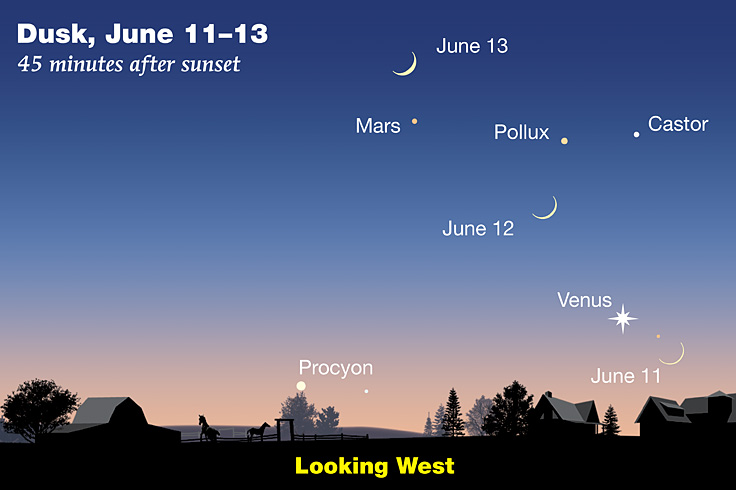June features long days and short nights in the Northern Hemisphere, so download our narrated Sky Tour astronomy podcast to make the most of the abbreviated dark hours after sunset. Special event: a partial solar eclipse on June 10th!

Listen Here:
Podcast: Play in new window | Download
Subscribe: Apple Podcasts | Google Podcasts | Spotify | Email | RSS | More
June’s solstice, on the 20th, marks the beginning of summer in the Northern Hemisphere — the peak of ample daylight but relatively short nights. So make the most of your stargazing by checking out this month’s Sky Tour astronomy podcast, which takes you on a guided tour of the evening sky. No experience or equipment is necessary — just download or stream the audio file and take it with you outside.
May 26th’s full Moon featured a total lunar eclipse that was visible from the western half of North America. New Moon comes two weeks later, on June 10th, and triggers a solar eclipse that flips the observing prospects: This Moon-Bites-Sun event will be visible in the Northeast U.S. and eastern Canada — but not from anywhere west of the Mississippi River.

Sky & Telescope
After that, the Moon returns to the evening sky and makes pretty pairings with both Venus and Mars. Those planets lie in the constellation Gemini and near its anchor stars, Castor and Pollux. In a broad arc that sweeps up and to the left across the sky, you’ll encounter other constellations that are part of the zodiac: Leo, Virgo, Libra, and Scorpius. This month’s Sky Tour spends time with each, helping you to find their locations and brightest stars.
One especially bright star that’s not in a zodiacal constellation is Arcturus, which is nearly overhead at nightfall. Arcturus is a red giant, an aging star that has swollen in size and become much brighter than our Sun. This beacon has some interesting claims to fame — one involving ancient navigation and the other regarding its motion within the Milky Way. Listen to this month’s Sky Tour to learn its secrets.
In fact, June’s Sky Tour packs a lot of information into just 12 minutes. Just head outside, then download or stream it to your audio device — and you’ll get a personally guided tour of what’s visible this month.
 0
0
Comments
You must be logged in to post a comment.